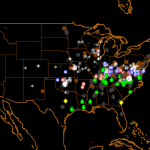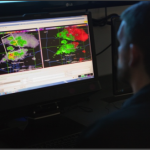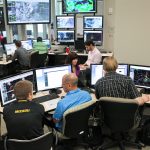
Weather models are the basic building blocks of a forecast. Researchers leverage machine learning techniques in an effort to improve these tools.

Weather models are the basic building blocks of a forecast. Researchers leverage machine learning techniques in an effort to improve these tools.

Increasing our knowledge of severe storms and improving the tools used to forecast them has been the singular mission of the NOAA National Severe Storms Laboratory since it was formed more than 50 years ago…

For more information, visit noaa.gov.

Is it raining, snowing or hailing where you are? Tell us about it! Report the weather at your location any time on the mPING app to help NOAA researchers and forecasters, and join citizen scientists…

Spring has arrived and with it come efforts to study and learn to better predict severe weather like tornadoes. Join NOAA for a Reddit Ask Me Anything (AMA) on severe weather research and prediction on April 27,…

Linda McGuckin was selected as NOAA Employee of the Month for December 2015.

This week, researchers from NOAA’s National Severe Storms Laboratory will launch the 2015 Phased Array Radar Innovative Sensing Experiment to assess the impacts of rapidly updating radar data on forecasters’ warning decision performance. The project…

One of the highest awards presented within NOAA will be awarded to the NSSL team that developed Multi-Radar Multi-Sensor, a system that helps forecasters manage the flood of weather data available to them. Under Secretary…

NOAA scientists are staying up late to probe nighttime thunderstorms. Learn more about Plains Elevated Convection at Night, a field campaign to collect data in the western Great Plains.

Several experiments to improve National Weather Service severe weather warnings will be conducted this spring in the NOAA Hazardous Weather Testbed (HWT) as part of the annual Experimental Warning Program.